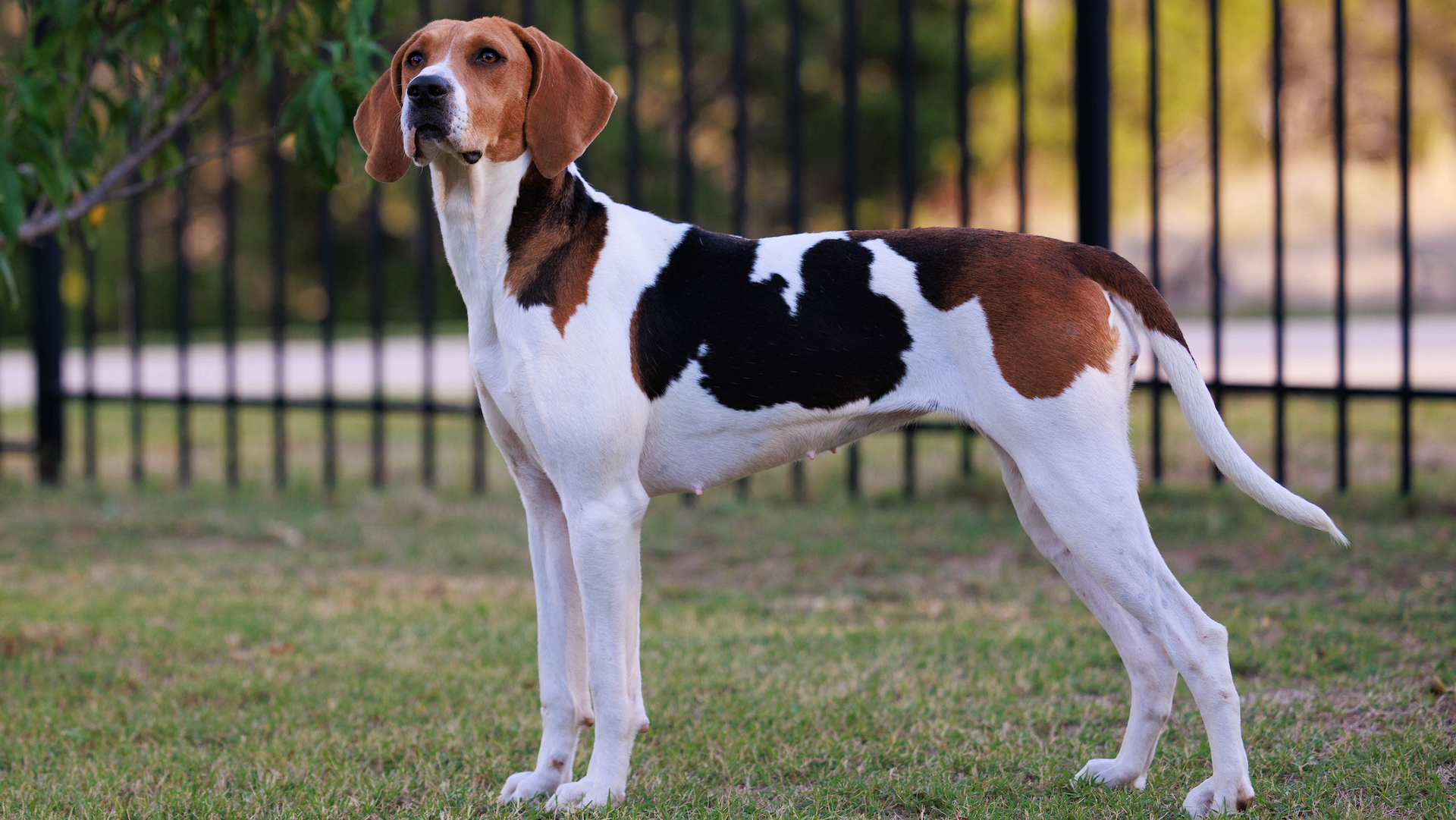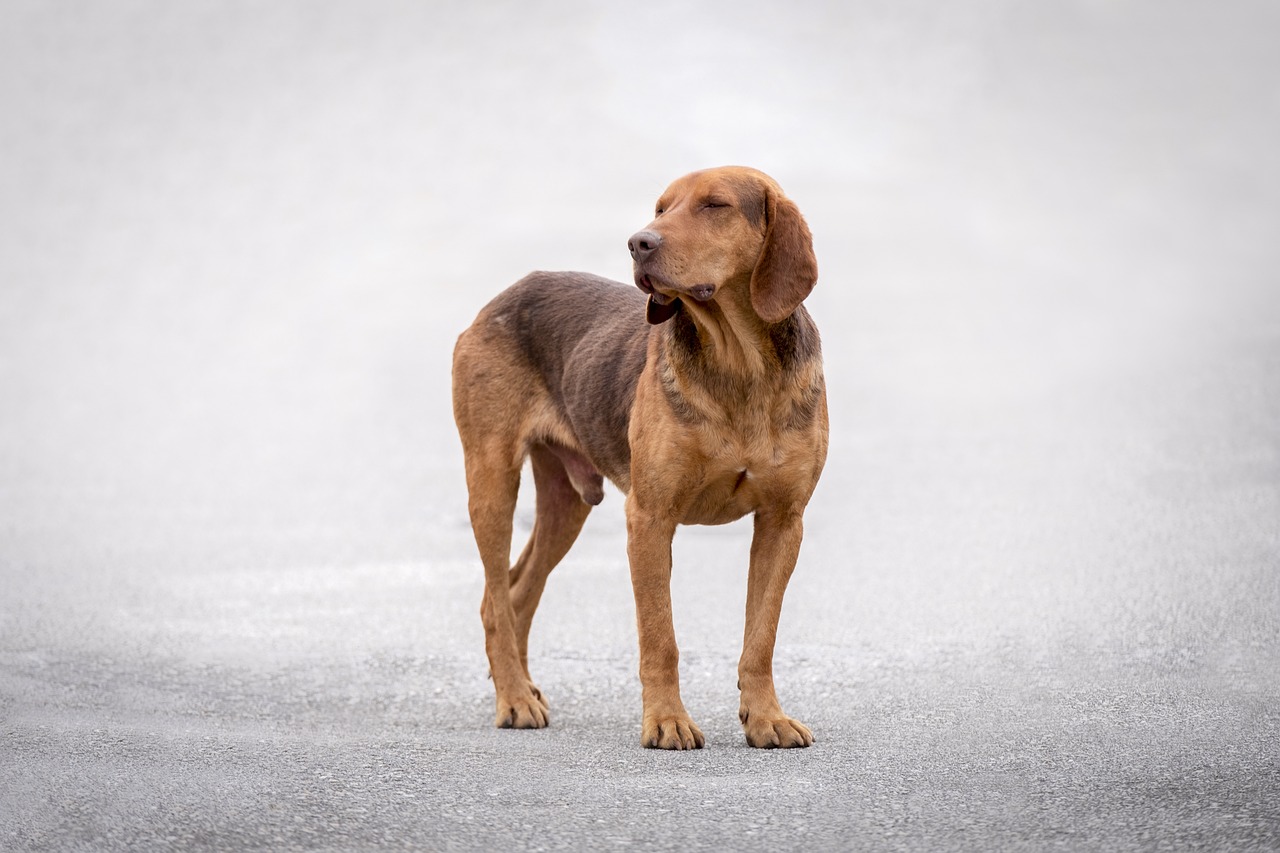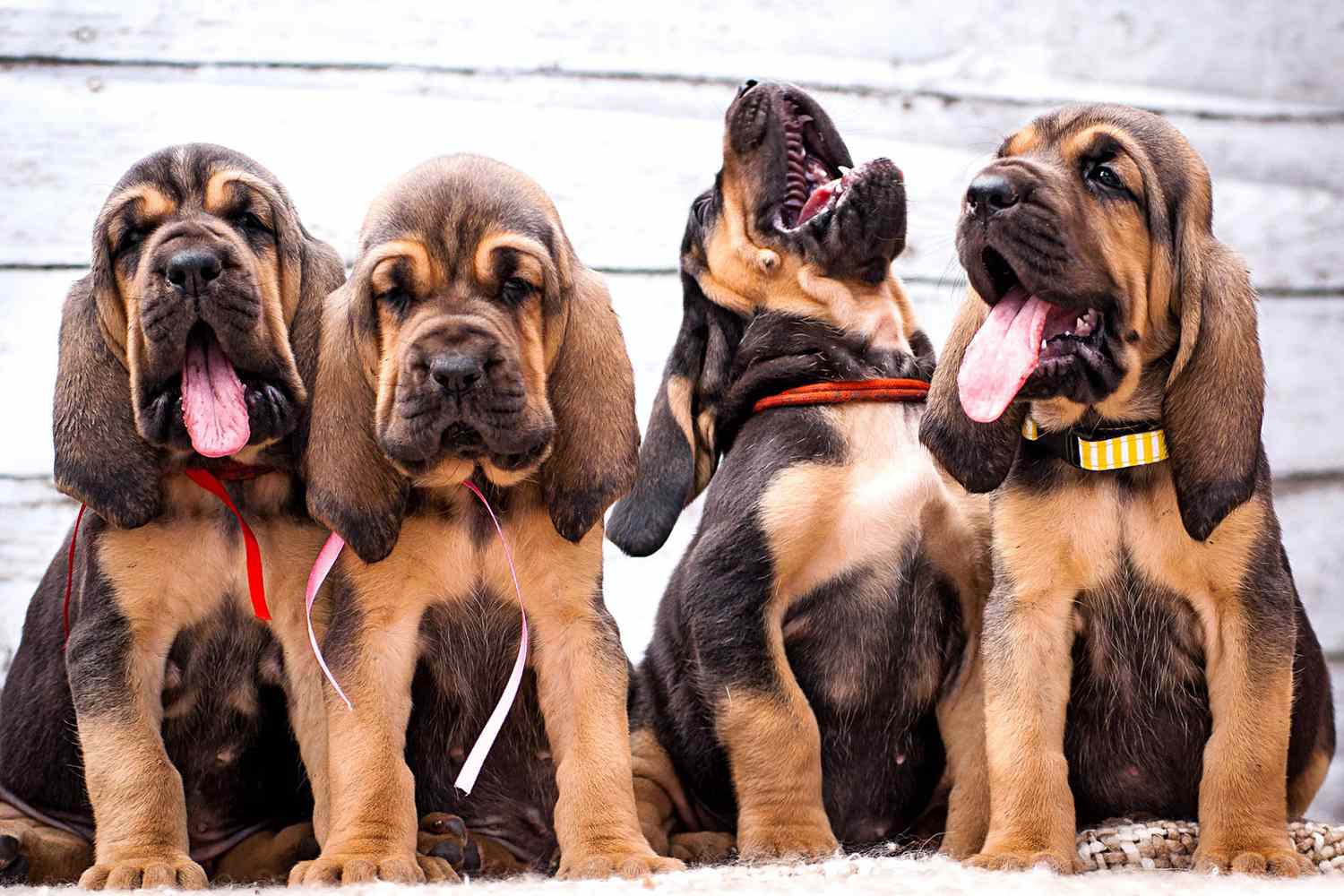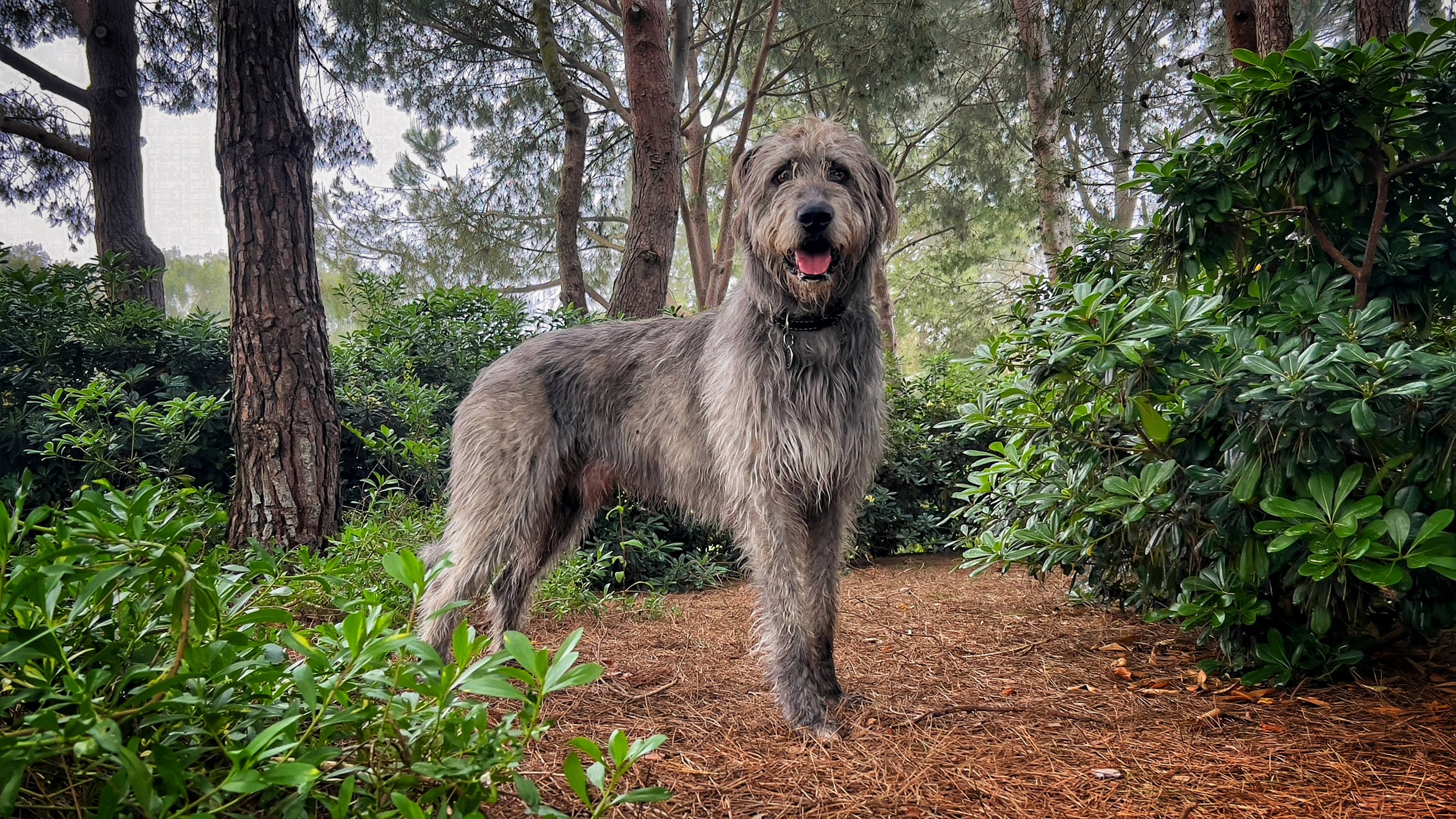Why I’m Absolutely Obsessed With American Foxhounds (And Why You Might Be Too)
The first time I encountered an American Foxhound at a local dog show, I literally couldn’t believe I’d never noticed this breed before. With their elegant athletic build, sweet expressive eyes, and that classic tricolor coat, they have all the makings of an iconic breed. Yet somehow, these incredible dogs remain one of America’s best-kept canine secrets. As someone who’s now totally foxhound-obsessed, I’m on a mission to change that!
If you’ve never heard of American Foxhounds, or only vaguely know them as “those hunting dogs,” you’re missing out on one of the most historically significant breeds in American history. These dogs have a lineage that’s literally older than our country itself, with founding father George Washington playing a pivotal role in their development. How many breeds can claim that kind of American heritage?
Whether you’re considering adding one of these sweet-natured hounds to your family, are curious about their legendary hunting abilities, or just want to learn about an important piece of American canine history, I’ve put together the ultimate guide to American Foxhounds. From their fascinating colonial origins to what they’re actually like as family companions (spoiler alert: they’re absolute sweethearts with some very specific quirks), we’ll cover everything you need to know about these melodious, athletic dogs. So grab your favorite beverage, get comfy, and let’s dive into the wonderful world of American Foxhounds!
American Heritage: The Fascinating History Behind the Breed
To truly understand what makes American Foxhounds so special, we need to appreciate their deep roots in our nation’s history. Their story is literally woven into the fabric of early America in ways that few other breeds can claim.
Presidential Origins: From George Washington to Modern Day
The American Foxhound’s story begins in 1650, when Robert Brooke sailed from England to Crown Colony in America with a pack of hunting dogs. These dogs, bred for fox hunting in England, became the foundation of several strains of American hounds. But the breed as we know it today owes much of its development to none other than George Washington.
Washington, an avid fox hunter, maintained a pack of foxhounds at Mount Vernon. Passionate about improving his hunting dogs, he kept detailed breeding records and regularly imported hounds from England. The major breakthrough came in 1785, when his good friend, the Marquis de Lafayette, sent Washington a gift of French foxhounds. These dogs, crossed with the existing English-descended hounds, created what would eventually be recognized as the American Foxhound.
Washington’s dedication to developing a superior hunting hound that could handle American terrain and game led to a taller, lighter, and faster dog than its English cousin. These dogs were bred to hunt American red fox, which was faster than the English fox, and to cover more ground in the vast American wilderness.
The breed continued to evolve over the centuries, with regional variations developing to suit different hunting styles and terrain. The Walker, Trigg, July, and Calhoun strains are among the most famous, each with slight differences in appearance and hunting style but all maintaining the core characteristics that make an American Foxhound.
From Working Hounds to Family Companions
For most of their history, American Foxhounds were purely working dogs, prized for their hunting abilities rather than as companions. They worked in packs, pursuing fox, coyote, or deer (depending on the region), with hunters following on horseback. Their distinctive baying voice allowed hunters to follow them even when they couldn’t be seen.
Today, while many American Foxhounds still work as hunting dogs, they’re also finding their place as family pets. This transition has been slower than for many breeds – partly because they were so perfectly suited to their working role that little emphasis was placed on promoting them as companions, and partly because their specific exercise and training needs make them challenging for some households.
The American Kennel Club officially recognized the breed in 1886, making it one of the earliest American breeds in the registry. Despite this early recognition, American Foxhounds remain relatively uncommon as pets compared to many other breeds with similar histories.
For those who do discover them, however, their sweet temperament, athletic abilities, and historical significance make them fascinating companions with a distinctly American story.
Physical Characteristics: The American Foxhound Look
American Foxhounds are stunning dogs with an athletic build that perfectly reflects their purpose as endurance runners. Let’s break down their physical characteristics and what makes them so distinctive.
Build, Size, and Overall Appearance
American Foxhounds are tall, lean, and athletic dogs built for speed and stamina rather than power. Males typically stand 22-25 inches at the shoulder and weigh between 60-70 pounds, while females are slightly smaller at 21-24 inches and 50-60 pounds. Despite these average measurements, there can be considerable variation in size depending on the strain and whether the dogs come from show or field lines.
Their most distinctive features include:
- A long, slightly domed skull with a straight muzzle
- Large, wide-set eyes that typically have a gentle, pleading expression
- Long, low-set ears that hang close to the cheeks
- A long, straight back and deep chest
- Clean, well-muscled legs built for covering ground tirelessly
- A moderately long tail carried high with a slight curve (their “flag” when on a scent)
Their overall appearance conveys speed, stamina, and grace. These are athletic working dogs whose form perfectly matches their function as dogs bred to run for hours over varied terrain.
Coat Colors and Grooming
American Foxhounds can come in almost any color pattern known in hounds. The most common colors include:
- Tricolor (black, white, and tan)
- Bicolor (black and tan, or white and tan)
- Red and white
- Blue tick
Their coat is short, medium-hard in texture, and lies close to the body. This practical coat protects them from brush and briars while hunting without requiring extensive grooming.
One of the nice things about American Foxhounds is their minimal grooming needs. Weekly brushing with a rubber curry brush or grooming mitt is typically sufficient to remove loose hair and keep their coat healthy. They do shed moderately year-round with seasonal increases in spring and fall.
Those long, floppy ears need regular checking and cleaning to prevent infection, as their length limits airflow. Weekly cleaning with a veterinarian-approved ear cleaner helps prevent problems.
Overall, American Foxhounds are a wash-and-wear breed with minimal grooming requirements – perfect for active owners who’d rather spend time hiking with their dog than grooming them!
Personality & Temperament: What Makes American Foxhounds Tick
Now for the part that really matters – what are these gorgeous dogs actually like to live with? Their personalities are as distinctive as their looks, and understanding their temperament is key to a successful relationship with an American Foxhound.
The Classic Hound Temperament With an American Twist
If I had to sum up the American Foxhound personality in three words, they would be: sweet, independent, and social. These dogs exemplify classic hound traits with their own unique twist.
Sweet nature is a defining characteristic of the breed. American Foxhounds are typically gentle, easygoing dogs with a pleasant disposition. They’re rarely aggressive or sharp-tempered, making them excellent companions for families who understand their needs. They generally do well with children, showing remarkable patience and tolerance when properly socialized.
Independence is part of their heritage as hunting dogs who needed to make decisions on their own while tracking. This can manifest as a certain aloofness or self-sufficiency that some mistake for stubbornness. American Foxhounds aren’t typically “velcro dogs” that need constant human direction or reassurance. They’re comfortable making their own decisions, which served them well as hunting dogs but can present challenges in a pet setting.
Social needs are strong in this breed. Historically pack hunters, American Foxhounds generally enjoy the company of other dogs and often thrive in multi-dog households. Many Foxhound owners report that their dogs seem happier and more settled with canine companions. This social nature extends to humans as well – they typically enjoy being part of family activities, though they may not demand constant attention the way some breeds do.
Voice and Communication
We can’t talk about American Foxhound personality without mentioning their voice! These dogs are vocal, with a distinctive melodious bay that served a practical purpose during hunts – allowing hunters to follow their progress from a distance.
Most American Foxhounds have an array of vocalizations, from the classic baying howl to excited barks, whines, and what many owners describe as “talking.” They tend to be most vocal when excited or when they catch an interesting scent, but some individuals are chattier than others.
This vocal nature can be challenging in suburban environments but is part of their charm for many enthusiasts. Training can help manage excessive vocalization, but it’s important to understand that some baying is simply part of who they are.
Exercise Needs and Energy Level
American Foxhounds were bred to run for hours over varied terrain while hunting. This endurance and energy level remains strong in the breed today, making them high-energy dogs that need substantial daily exercise.
A leisurely walk around the block won’t cut it for these athletic hounds. They typically need a minimum of 1-2 hours of vigorous exercise daily – running, hiking, swimming, or playing with other dogs. Without adequate physical outlets, they can become bored, destructive, and excessively vocal.
Their exercise needs make them excellent companions for active, outdoorsy people who enjoy having a tireless partner for hikes, runs, or bike rides. They can excel in canine sports like tracking, field trials, lure coursing, and even agility (though their independent nature may make them less competitive than some breeds in the latter).
It’s worth noting that a securely fenced area is essential for American Foxhounds. Once they catch an interesting scent, their hunting instincts take over, and they can run for miles completely focused on the trail. Their recall can be unreliable at best when they’re in “hunting mode,” making off-leash exercise in unfenced areas risky.
The Amazing Nose: Understanding Their Scenting Abilities
The American Foxhound’s most remarkable feature isn’t their elegant appearance or melodious voice – it’s their extraordinary sense of smell. Let’s explore what makes their scenting ability so special and how it impacts life with these dogs.
The Science Behind the Sniff
Like all scent hounds, American Foxhounds have a significantly more developed olfactory system than humans. While the human nose contains about 5-6 million scent receptors, a hound’s nose packs an estimated 220 million receptors! Their brain’s olfactory bulb (the part that processes scent information) is also proportionally much larger than ours.
This gives them the ability to detect scents at concentrations up to 100 million times lower than what humans can perceive. They can distinguish between incredibly similar scents, follow trails that are days old, and sort through a complex landscape of overlapping odors to focus on their quarry.
Their physical features enhance this natural ability. Those long, pendulous ears help stir up scent particles from the ground as the dog moves. The loose skin around their muzzle can trap scent particles, and their moist, spongy noses efficiently capture scent molecules from the air.
Tracking Techniques and Talents
American Foxhounds were specifically developed to track fox, a quarry known for its evasive tactics and speed. This created a dog with exceptional focus and determination on a scent trail, able to follow even when the trail gets complicated.
When tracking, an American Foxhound will put their nose to the ground and methodically follow the exact path their quarry took. As they get closer to their target, their excitement builds, often expressed through increased vocalization and a higher tail carriage.
Different strains of American Foxhounds have slightly different tracking styles. For example, the Walker strain is known for greater speed, while the July strain is prized for a slower, more methodical tracking style with exceptional voice.
This remarkable scenting ability makes them excellent working dogs for various scent-based activities beyond traditional fox hunting. Today, American Foxhounds serve in search and rescue, detection work, and competitive tracking events, though they remain less common in these roles than some other hound breeds.
For pet owners, this incredible nose means that walks will often turn into sniffing expeditions, and secure fencing is absolutely essential. Once they catch an interesting scent, their focus can be single-minded, and their recall reliability drops dramatically as hunting instincts take over.
Health Considerations: A Generally Robust Breed
One of the advantages of American Foxhounds is their relatively good health. As a breed developed for working purposes rather than appearance, they’ve maintained a functional structure and avoided many of the health problems that plague some more popular breeds. However, there are still some considerations potential owners should be aware of.
Common Health Issues to Watch For
While generally healthy dogs with few genetic problems, American Foxhounds can be prone to certain conditions:
- Hip Dysplasia: This developmental condition affects the hip joint and can lead to arthritis and mobility issues. It’s less common in American Foxhounds than in many large breeds but still occurs.
- Ear Infections: Those beautiful long ears are prone to infections due to poor air circulation.
- Thrombocytopathy: A blood platelet disorder that can affect clotting.
- Epilepsy: Seizure disorders can occur in the breed, though they’re not especially common.
Working with a reputable breeder who conducts health testing on their breeding stock can reduce the risk of inherited conditions. Regular veterinary check-ups are essential for catching and addressing health issues early.
Lifespan and Aging Considerations
The average lifespan of an American Foxhound is about 11-13 years, which is good for a larger breed. Many remain active and healthy well into their senior years.
As they age, American Foxhounds may become more settled and less driven to follow every interesting scent, often making them more manageable as house pets. However, they typically maintain their love of exercise well into their senior years.
Senior American Foxhounds may develop arthritis, particularly if they’ve been very active throughout their lives. Weight management becomes even more critical for older dogs to reduce strain on their joints. Many owners find that joint supplements (given under veterinary guidance) help maintain mobility as their Foxhounds age.
Training and Socialization: Working With Their Nature
Training an American Foxhound requires understanding their unique mindset and working with their natural instincts rather than against them. Let’s explore effective approaches to bringing out the best in these independent-minded dogs.
Understanding the Foxhound Mindset
American Foxhounds were bred to work in packs, following scent trails over long distances with minimal human direction. This created a dog with a very different learning style and motivation than breeds developed for close cooperation with humans, like herding or retrieving breeds.
They’re intelligent, but their intelligence is geared toward problem-solving in hunting scenarios rather than eager obedience. Many new Foxhound owners mistake their independent decision-making for stubbornness or lack of intelligence, when in fact they’re simply operating according to their breeding.
Additionally, their focus on scent can be all-consuming, making it challenging to maintain their attention in environments with interesting smells. This doesn’t mean they’re untrainable – just that training needs to be approached with an understanding of their natural tendencies.
Effective Training Approaches
Here are some strategies that work particularly well with American Foxhounds:
- Start early: Begin training and socialization when they’re puppies and more receptive to new experiences.
- Use positive reinforcement: Foxhounds respond much better to rewards than corrections. Find what motivates your individual dog – food rewards work for many, but some may respond better to play or praise.
- Keep sessions short and engaging: Foxhounds can become bored with repetitive training. 5-10 minute sessions several times a day are more effective than one long session.
- Be consistent but flexible: Consistency in rules and commands is important, but flexibility in training approaches may be necessary as you discover what works best for your individual dog.
- Practice in gradually more distracting environments: Start training in a quiet room before expecting compliance at a dog park.
- Consider their social nature: American Foxhounds often learn well from other well-behaved dogs, so training in a positive group setting can be effective.
Socialization Needs
Early and thorough socialization is crucial for American Foxhounds. While generally not aggressive, without proper socialization they can be shy or reserved with strangers and may become overwhelmed in new environments.
Expose your Foxhound puppy to a wide variety of people, places, animals, and experiences early in life to help them develop into confident, well-adjusted adults. Their natural sociability with other dogs makes dog-dog socialization usually straightforward, but exposing them to various human types and non-canine animals is equally important.
Many American Foxhounds can live peacefully with cats if introduced properly as puppies, though their hunting instincts may make them unsuitable for households with smaller pets like rabbits or guinea pigs.
Special Training Challenges
Two aspects of training deserve special attention with American Foxhounds: recall and containment.
Reliable recall (coming when called) is perhaps the biggest training challenge with this breed. Once they catch an interesting scent, their hunting instincts can override their response to commands. For safety, most experienced Foxhound owners never allow their dogs off-leash in unsecured areas, regardless of how well-trained they seem. For those determined to improve recall, long-line training and high-value rewards can help, but expectations should remain realistic.
Containment is essential for American Foxhounds. They’re notorious escape artists when motivated by an interesting scent, capable of climbing, digging under, or jumping over inadequate fencing. A minimum 6-foot fence with no gaps and preferably with dig guards is recommended for yards where Foxhounds will spend time unsupervised.
Daily Life with an American Foxhound: Practical Considerations
So what’s it actually like to live with an American Foxhound day to day? Let’s get into the practical aspects of sharing your home with these athletic, sweet-natured hounds.
Exercise and Mental Stimulation
We’ve touched on their exercise needs, but it bears repeating: American Foxhounds require substantial daily physical activity to remain happy and well-behaved. They’re endurance athletes who thrive on running, hiking, and active play.
Beyond physical exercise, mental stimulation is equally important. Bored Foxhounds can become destructive and excessively vocal. Some ways to provide mental engagement include:
- Scent-based games and activities (tracking, nosework, scent trails)
- Puzzle toys and food-dispensing toys
- Training for dog sports like tracking or lure coursing
- Rotating a collection of toys to maintain novelty
- Social play with compatible dogs
Many American Foxhound owners find that the breed does best with a combination of physical exercise and activities that engage their powerful nose. Simple “find it” games where treats or toys are hidden around the house or yard provide both mental stimulation and a constructive outlet for their natural hunting instincts.
Living Arrangements and Space Needs
American Foxhounds are adaptable and can live in various settings, provided their exercise and containment needs are met. They’re not ideal apartment dogs due to their exercise requirements and potential vocalization, but some individuals with more moderate energy levels can adapt to apartment living if given sufficient daily outings.
A home with a securely fenced yard is ideal, but more important than the size of the yard is the owner’s commitment to providing adequate exercise and mental stimulation. Many American Foxhounds are quite calm and relaxed indoors after sufficient exercise, happy to lounge on the couch or dog bed between adventures.
They generally do well in households with other dogs and can benefit from the companionship, especially if left alone while their humans work. Many actually do better with at least one other dog for company, particularly if that dog is also active and playful.
Feeding and Diet Considerations
American Foxhounds typically do well on high-quality commercial dog foods formulated for active large breeds. As a breed developed for endurance running, they have higher caloric needs than many dogs of similar size, particularly if they’re getting the exercise they require.
Many Foxhounds have healthy appetites but generally aren’t prone to obesity if properly exercised. Still, monitoring food intake and maintaining a healthy weight is important, especially as they age and their activity level may decrease.
Some owners of working American Foxhounds opt for performance dog foods with higher protein and fat content, while less active pets may do better on standard adult formulations. As always, your veterinarian can provide specific nutritional recommendations based on your individual dog’s needs.
Is an American Foxhound Right for You? Honest Assessment
After learning all about these distinctive dogs, you might be wondering if an American Foxhound would fit well in your lifestyle. Let’s take an honest look at who should (and perhaps shouldn’t) consider this breed.
You Might Be a Great American Foxhound Owner If…
An American Foxhound might be right for you if:
- You’re very active and enjoy outdoor activities like running, hiking, or cycling
- You have a securely fenced yard or reliable access to safe exercise areas
- You appreciate their vocalization or live in an area where it won’t disturb neighbors
- You have patience for training a dog with an independent streak
- You’re looking for a sweet-natured, gentle dog with high energy
- You have experience with hounds or are willing to learn about their unique needs
- You have space for a medium to large dog
- You can provide consistent daily exercise regardless of weather or schedule changes
- You appreciate their hunting heritage and natural instincts
- You’re interested in activities that utilize their amazing nose, like tracking or nosework
American Foxhounds can adapt well to family life and generally do well with children, especially if raised with them. They often thrive in households with multiple dogs, benefiting from canine companionship.
A Different Breed Might Be Better If…
An American Foxhound might not be the best choice if:
- You have a busy schedule that limits time for daily exercise
- You live in an apartment or area with strict noise ordinances
- You want a dog that’s easy to train with high reliability off-leash
- You’re looking for a guard dog (they’re typically friendly to everyone)
- You have small pets like rabbits or guinea pigs (strong prey drive)
- You’re away from home for long periods regularly
- You prefer a dog that focuses primarily on you rather than environmental stimuli
- You want a dog that’s easy to find in rescue or from breeders (they’re relatively uncommon)
Finding Your American Foxhound: Adoption vs. Breeder
If you decide an American Foxhound is right for you, consider both adoption and reputable breeders:
Foxhound-specific rescues exist throughout the country and often have wonderful dogs needing homes. Many foxhounds end up in shelters because owners underestimated their exercise needs or couldn’t accommodate their independent nature. Adoption typically costs $100-$300 and often includes initial veterinary care.
If purchasing from a breeder, research extensively to find one who prioritizes health and temperament over show ring success. Reputable breeders conduct health testing on breeding stock, provide proper socialization for puppies, and offer lifetime support to puppy buyers. Expect to pay $800-$1,500 for a well-bred American Foxhound puppy.
The American Foxhound Club (the breed’s national parent club) can be a good resource for finding reputable breeders or rescue organizations.
Conclusion: The All-American Canine You Didn’t Know You Needed
There’s something undeniably special about American Foxhounds. From their deep historical roots to their sweet temperament and athletic abilities, these dogs represent an important piece of American heritage while offering devoted companionship to those who understand their needs.
Living with an American Foxhound certainly comes with unique challenges – their exercise requirements, potential vocalization, and that independent streak that can make training interesting. But for active people who appreciate them for exactly who they are, these challenges are far outweighed by the joy of sharing life with such a noble, affectionate, and capable companion.
Whether they’re bounding along a hiking trail with endless energy or curled up beside you after a day of adventures, American Foxhounds bring a special quality to the lives of those lucky enough to know them. They remind us of our country’s history while forming deep bonds with their modern families.
If you decide to welcome one of these beautiful hounds into your home, prepare for an adventure filled with sweet companionship, impressive athletic feats, and the melodious sound of one of America’s oldest and most authentic breeds. It’s a unique journey – and for the right person, an incredibly rewarding one.




